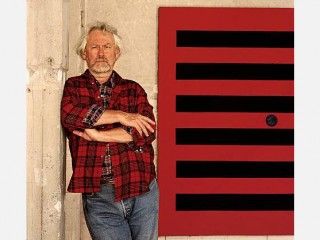
Donald Judd biography
Date of birth : 1928-06-03
Date of death : 1994-02-12
Birthplace : Excelsior Springs, Missouri
Nationality : American
Category : Arts and Entertainment
Last modified : 2011-02-24
Credited as : Artist sculptor, Minimalism ,
American sculptor and art writer Donald Judd was best known as a major practitioner of and spokesman for Minimalism in the 1960s. His works, or "specific objects," display an overall sense of wholeness and clarity and reiterate the belief that art and idea are inseparable.
Donald Judd was born in Excelsior Springs, Missouri, on June 3, 1928. By the time he had graduated from high school his family had lived in Omaha, Kansas City, Des Moines, Dallas, Philadelphia, and Westwood, New Jersey. Judd served in the U.S. Army in Korea from 1946 to 1947. In 1953 he settled in New York City, where he maintained a studio into the 1980s. In 1964 Judd married Margaret Hughan Finch. They had two children, Flavin Starbuck and Rainer Yingling.
Upon his return from Korea Judd spent a short time studying at the Art Students League in New York. From 1948 to 1949 he was enrolled at the College of William and Mary in Williamsburg, Virginia, and from 1949 to 1953 he studied at Columbia University and at the Art Students League concurrently. Judd's area of concentration at Columbia was philosophy, with particular emphasis on empiricism and pragmatism. He graduated, cum laude, in 1953 with a Bachelor of Science. Judd received a Masters in Art History from Columbia in 1962, having majored in the Renaissance and the contemporary arts. Beginning in 1953 he taught, off and on, at such diverse institutions as the Christadora Home and the Police Athletic League (1953), the Allen Stevenson School (1957-1961), the Brooklyn Institute of the Arts and Sciences (1962-1964), Dartmouth College (1966), and Yale University (1967).
In 1959, partially in an attempt to support his art-making, Judd began his career as a critic and art writer. He served as a reviewer for Art News in 1959 and that same year moved to Arts Magazine, where he asserted that painting was "finished," and where he continued as a contributing editor until 1965. In 1965 he also wrote reviews for Art International. Judd's writings are compressed and concrete and have been compared to his mature sculpture. His undergraduate interest in philosophy remains evident, as does his graduate work in art history. Judd is considered to have been one of the major spokespersons for the Minimalists in the 1960s, a period in American art when concept and art object were firmly melded. He was particularly praised for his successful integration of the artist's perspective with that of the critic and art thinker.
Donald Judd began his art-making career as a painter in the late 1950s and early 1960s, when Abstract Expressionism was still the prevalent force in the New York art world. For Judd, and for many other artists of his generation, works that reflected gesture and/or the artist's physical or emotional state were no longer viable. Judd preferred to have his art reflect a set of decisions intrinsic to the individual work itself. Although he attempted to eliminate such devices as spatial illusion and reference to figure or movement from his painting, in the end he still found the very relationship between picture field and support to be object unspecific. Seeking to resolve such problems, Judd began working in three dimensions around 1962. His first works of this period were reliefs and, soon after, pieces built for the floor. As the result of his initial attempts to translate field and support into real space, he began to work with boxes, a form which was to become the signature of his mature work. By 1963 he began to produce his long wall boxes, which served as a source for his series of progressions—structures which depend upon mathematical systems and thereby avoid reference to composition. Judd, who had been painting his works with industrial pigments, first made use of industrial fabrications in metal in 1964. By 1970 Judd began designing site specific pieces and by 1972 larger scale outdoor works which reflected their surroundings.
Judd was viewed as an advocate of objective sculpture and non-relational art. His decision to attempt to do away with compositional effects was based on his belief that composition carried with it all the structures and values of the European tradition. Judd linked composition to rationalism, and he preferred to think of himself as an antirationalist. In his works—which always affirm their aesthetic purpose—the artist-repeatedly insisted that the whole is more important than the parts.
Judd's sculpture, usually untitled, is identified with the collection within which it is housed. His works, or "specific objects," are included in numerous private collections and in the permanent holdings of a host of such major public institutions as the Museum of Modern Art, the Whitney, the Guggenheim, the Hirshhorn, the Art Institute of Chicago, the San Francisco Museum of Modern Art, and the National Gallery of Canada. Special note should be made of the following from the extensive list of Judd's exhibitions. After Judd's first and only one-man show as a painter, in 1957, he decided not to show his two-dimensional work again. He exhibited his first "relief in three dimensions" at the Brooklyn Museum in 1962, and in 1963 his sculpture was included in the first of a series of Green Gallery Exhibitions (New York). In 1966 Leo Castelli, who remained Judd's dealer into the 1980s, presented the first of many Judd exhibitions at the Castelli Gallery (New York), a show composed exclusively of industrially manufactured metal pieces. In 1968 the Whitney Museum of American Art mounted a Judd retrospective, as did the National Gallery of Canada in 1975.
















